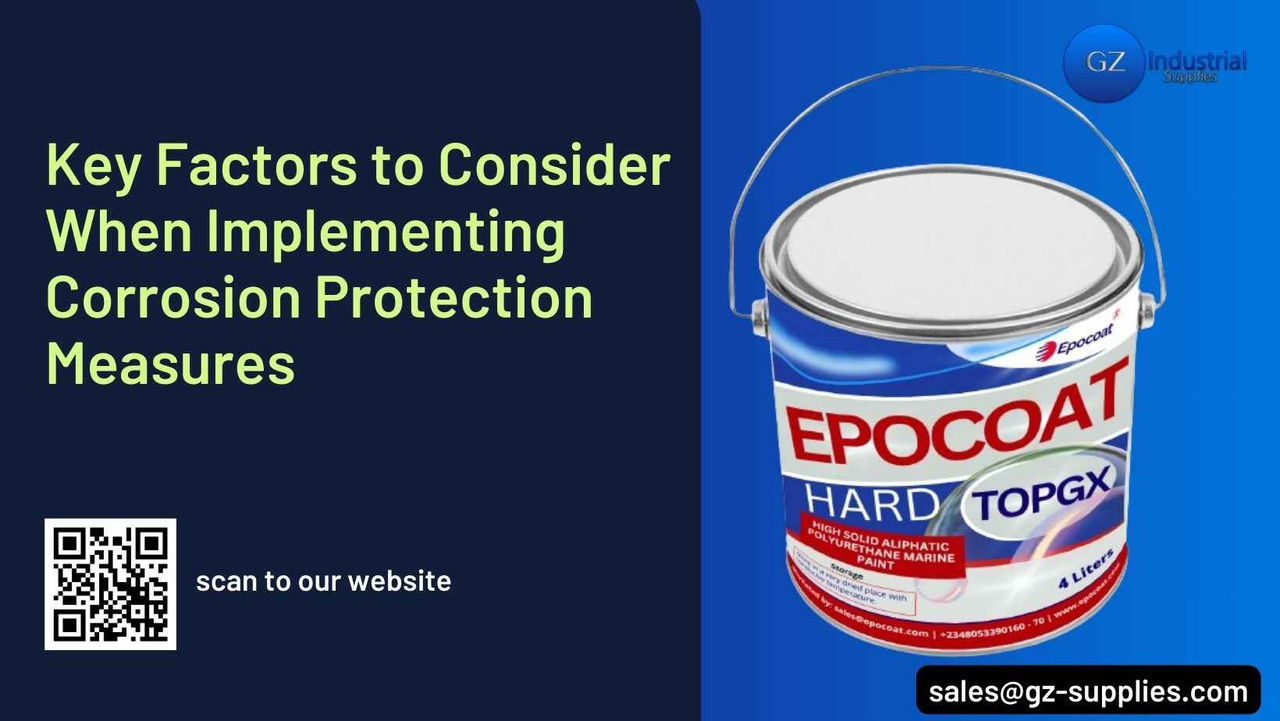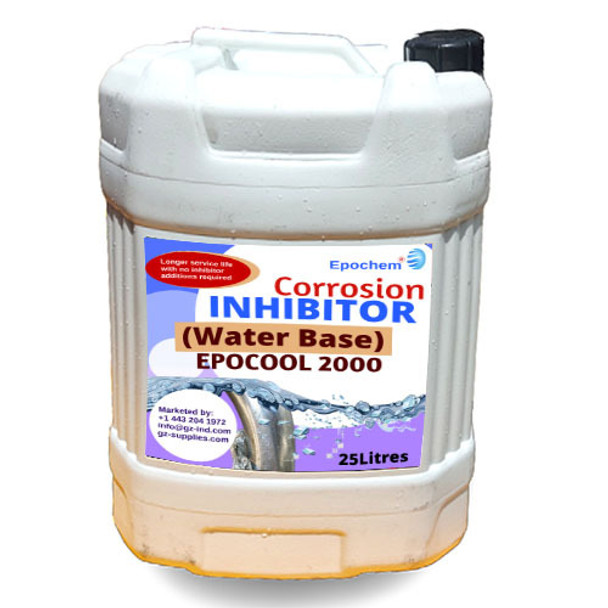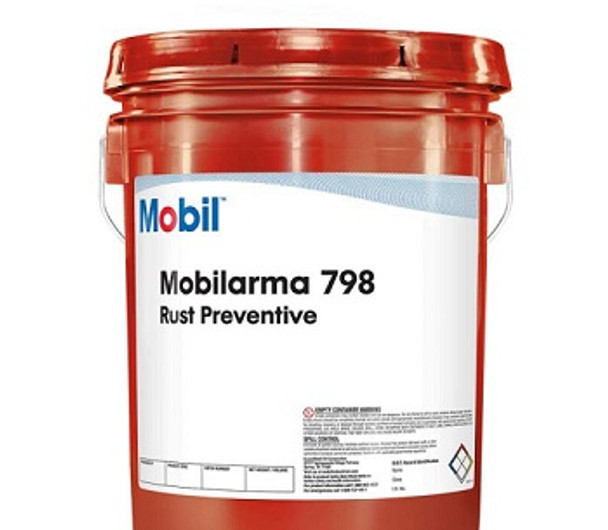Key Factors to Consider When Implementing Corrosion Protection Measures
Introduction
Corrosion is a natural process that results in the gradual destruction of materials, particularly metals, through chemical or electrochemical reactions with the environment. This degradation can lead to significant safety hazards, costly repairs, and even catastrophic failures in structures and machinery. Implementing effective corrosion protection measures is essential in various industries, from oil and gas to construction and marine operations, to extend the lifespan of assets and ensure their safety and reliability.
Corrosion can have devastating economic impacts, including the costs of repairs, replacements, and downtime. In the oil and gas industry, for instance, corrosion-related failures can lead to leaks, fires, or explosions, resulting in both financial losses and significant safety hazards. Additionally, corroded infrastructure, such as bridges or buildings, can lead to structural failures with potential loss of life.
In the marine industry, ships and offshore structures are constantly exposed to harsh saltwater environments that accelerate corrosion. In the oil and gas sector, pipelines, storage tanks, and drilling equipment are subject to corrosive chemicals and extreme temperatures. The construction industry also faces challenges with corrosion in steel structures, particularly in areas with high humidity or pollution.
This guide aims to provide a comprehensive overview of the key factors to consider when implementing corrosion protection measures. It covers essential aspects such as environmental conditions, material selection, protective coatings, design considerations, maintenance, cost analysis, and compliance with industry standards and regulations.
Epocool 2000 Corrosion Inhibitor Coolant 25L
Types of Corrosion:
General Corrosion:
General corrosion is the uniform loss of material over a large surface area. It is typically predictable and easier to detect but still poses significant risks, particularly in structural components where even a small loss of thickness can compromise integrity.
Galvanic Corrosion:
This type occurs when two different metals are in electrical contact in the presence of an electrolyte. The less noble metal (anode) corrodes faster than it would alone, while the more noble metal (cathode) is protected. This is a common concern in marine environments and where dissimilar metals are used together.
Pitting and Crevice Corrosion:
Pitting corrosion leads to localized, small holes in the material, which can be difficult to detect but cause severe damage. Crevice corrosion occurs in confined spaces where the environment becomes more aggressive, such as under gaskets or washers.
Factors to Consider When Implementing Corrosion Protection Measures
Environmental Considerations
1. Climate and Weather Conditions:
- Humidity and Temperature: High humidity levels, especially in tropical climates, can significantly increase the rate of corrosion. Temperature fluctuations can cause thermal expansion and contraction, leading to cracks or gaps where moisture can accumulate and accelerate corrosion. For instance, in Nigeria's tropical climate, high humidity coupled with warm temperatures creates an environment where corrosion is particularly aggressive, requiring robust protection measures.
- Coastal and Marine Environments: Coastal areas are exposed to salt-laden air, which is highly corrosive to metals. Marine environments, with constant exposure to seawater and salt spray, demand corrosion protection methods specifically designed to withstand these conditions. The combination of salt, moisture, and oxygen creates an environment where corrosion can rapidly compromise metal structures.
2. Chemical Exposure:
- Industrial and Chemical Plant Environments: In industrial settings, materials may be exposed to various chemicals that can cause or accelerate corrosion. For example, sulfuric acid, often found in industrial processes, can cause rapid deterioration of steel. Understanding the specific chemicals and their concentrations is critical when selecting corrosion-resistant materials and protective coatings.
- Agricultural and Soil Influences: Soil chemistry can vary widely, with some soils being particularly corrosive due to high moisture content, acidity, or the presence of salts and organic materials. Agricultural environments may also introduce fertilizers and pesticides that can accelerate corrosion of underground pipelines or metal structures.
- UV Radiation and Its Effects on Materials: Prolonged exposure to UV radiation can degrade certain materials, particularly polymers and paints, leading to loss of integrity and reduced protection against corrosion. UV-resistant coatings or materials may be necessary in environments with high UV exposure, such as those found in many parts of Africa.
Material Selection
- Stainless Steel and Corrosion-Resistant Alloys: Stainless steel is often chosen for its excellent resistance to corrosion, particularly in environments where exposure to water or chemicals is a concern. Other alloys, such as nickel or chromium-based alloys, offer enhanced corrosion resistance in more aggressive environments. The selection of these materials should be based on their ability to withstand specific corrosive elements in the operational environment.
- Non-Metallic Materials: Non-metallic materials, such as plastics, ceramics, or composites, are increasingly used in applications where metal corrosion is a concern. These materials are often chosen for their resistance to specific chemicals or environmental conditions where metals would fail. For example, PVC or HDPE pipes are widely used in water and chemical transport due to their resistance to corrosion and ease of installation.
Epochem 109 Corrosion Inhibitor 5Ltr
Protective Coatings for Corrosion
Types of Coatings:
- Paints and Epoxies: Paints and epoxy coatings provide a physical barrier between the metal surface and the environment, preventing corrosive elements from reaching the metal. Epoxy coatings are particularly valued for their durability and resistance to chemicals, making them ideal for industrial applications. The choice of coating depends on factors such as exposure to sunlight, temperature extremes, and the presence of aggressive chemicals.
- Metallic Coatings (e.g., Galvanization):Galvanization involves applying a protective layer of zinc to steel or iron. The zinc layer serves as a sacrificial coating, corroding in place of the underlying metal. This method is widely used in construction, automotive, and marine applications where long-term protection against rust is required.
- Specialty Coatings for Harsh Environments: In particularly harsh environments, such as those involving high temperatures, aggressive chemicals, or continuous immersion in water, specialized coatings like fluoropolymers or thermal sprays may be necessary. These coatings are designed to withstand extreme conditions where conventional coatings would fail.
Surface Preparation and Application:
Proper surface preparation is a critical step in the effectiveness of any protective coating. The success of a coating largely depends on how well it adheres to the surface, which can be compromised by contaminants like rust, oil, dirt, or old paint. Techniques such as abrasive blasting, chemical cleaning, or power tool cleaning are commonly used to ensure a clean, roughened surface that allows for optimal adhesion of the coating. In environments with high moisture or chemical exposure, inadequate surface preparation can lead to early coating failure, leaving the material vulnerable to rapid corrosion. A properly prepared surface can significantly extend the life of the coating and, consequently, the material itself.
Methods of Application: The method of applying a protective coating can influence its performance and longevity. Common application methods include:
Spraying: This method is often used for large surfaces or areas with complex geometries. It allows for even coverage and is suitable for applying thin coatings like paints or primers.
Brushing or Rolling: These methods are typically used for smaller areas or where more control is needed. They are often preferred for applying thicker coatings or when working in confined spaces.
Dipping: Involves submerging the entire component into the coating solution, providing a uniform coating on all surfaces, including hard-to-reach areas. This method is often used for small parts or when corrosion protection is required on all sides of a component.
Each method has its advantages and considerations, depending on the size of the surface, the type of coating, and the environmental conditions during application. Ensuring the right application technique is chosen can help maximize the coating's protective properties.
Coating Maintenance and Reapplication:
Even the best coatings will degrade over time, particularly in harsh environments. Regular maintenance, including inspections and touch-ups, is essential to ensure continued protection. Signs of coating failure, such as peeling, blistering, or rust stains, should be addressed promptly to prevent underlying corrosion. Reapplication may be necessary after a certain period, depending on the environment and the type of coating used. For instance, marine coatings may require more frequent reapplication due to constant exposure to saltwater. Scheduling regular maintenance checks and budgeting for reapplication can prevent unexpected failures and extend the life of the structure.
Maintenance and Monitoring
Regular Inspection and Monitoring Techniques:
- Visual Inspections and Non-Destructive Testing (NDT): Regular inspections are the first line of defense against corrosion. Visual inspections can identify obvious signs of corrosion, such as rust, discoloration, or blistering paint. However, for a more thorough assessment, non-destructive testing (NDT) methods like ultrasonic testing, radiography, or magnetic particle inspection are used to detect internal corrosion or weaknesses that are not visible on the surface. For example, ultrasonic testing can measure the thickness of metal components to detect thinning due to corrosion, which is critical in pressure vessels and pipelines. Regular NDT inspections allow for early detection and correction of corrosion issues before they lead to failure.
- Use of Sensors and Monitoring Systems: Advanced monitoring systems, including corrosion sensors and remote monitoring technology, provide continuous data on the condition of materials and structures. These systems can detect changes in environmental conditions, material thickness, or electrochemical activity that indicate the onset of corrosion. For instance, corrosion sensors installed on pipelines can monitor the internal environment and provide real-time data on corrosion rates, allowing for predictive maintenance and reducing the risk of unexpected failures.
Cathodic Protection:
Sacrificial Anodes: Sacrificial anodes are a common method of cathodic protection, particularly in marine environments. By attaching a more reactive metal, such as zinc or magnesium, to the protected structure, the anode corrodes preferentially, protecting the underlying metal from corrosion. This method is widely used on ships, offshore platforms, and pipelines. For example, sacrificial anodes are often used on the hulls of ships to prevent corrosion of the steel structure. The anodes can be replaced as needed, ensuring continued protection.
Impressed Current Systems: Impressed current cathodic protection (ICCP) systems use an external power source to apply a continuous current to the structure, reducing its tendency to corrode. ICCP systems are more controlled than sacrificial anodes and are used in situations where precise protection is needed, such as in large storage tanks or complex industrial equipment. In underground pipelines, ICCP systems are commonly used to protect the pipeline from corrosion, especially in environments with aggressive soil chemistry. These systems are monitored regularly to ensure they are functioning correctly and providing adequate protection.
Maintenance Scheduling and Record Keeping:
A well-planned maintenance schedule, supported by detailed record-keeping, is essential for effective corrosion management. Maintenance schedules should be based on the expected lifespan of coatings, the environmental conditions, and the results of regular inspections. Keeping detailed records of all inspections, maintenance activities, and repairs ensures that trends can be tracked, and potential issues can be addressed before they become serious problems. For example, in the oil and gas industry, maintenance records are meticulously kept for all critical infrastructure, allowing for data-driven decisions on when to reapply coatings or replace components. This proactive approach helps avoid costly downtime and extends the life of assets.
Mobilarma 798 Premium Performance Rust Preventive
Compliance with Standards and Regulations
Industry Standards (ISO, NACE, ASTM):
Compliance with industry standards is vital for ensuring the effectiveness and safety of corrosion protection measures. Organizations such as ISO (International Organization for Standardization), NACE (National Association of Corrosion Engineers), and ASTM (American Society for Testing and Materials) provide guidelines and specifications for materials, coatings, testing methods, and maintenance practices. Adhering to these standards ensures that the corrosion protection measures meet the necessary quality and performance criteria.
For example, ISO 12944 provides comprehensive guidelines for the corrosion protection of steel structures by protective paint systems, covering everything from surface preparation to the selection of appropriate coating systems based on environmental conditions.
Case Studies of Compliance and Non-Compliance:
Case studies highlight the importance of compliance with industry standards. In one instance, an offshore oil platform that adhered to NACE standards for cathodic protection significantly reduced corrosion-related maintenance costs and extended its operational life. In contrast, another project that neglected proper standard compliance experienced premature coating failure, leading to costly repairs and legal liabilities. These examples underscore the importance of not only understanding but also rigorously applying industry standards in corrosion protection projects.
Environmental Regulations:
Restrictions on Certain Chemicals and Coatings: Environmental regulations often restrict the use of certain chemicals and coatings due to their potential impact on the environment and human health. For instance, the use of lead-based paints and chromate coatings has been heavily regulated or banned in many countries due to their toxicity. Complying with these regulations is essential for avoiding legal penalties and ensuring that corrosion protection practices are environmentally sustainable. Companies must stay informed about evolving regulations and adapt their corrosion protection strategies accordingly. For example, the shift towards water-based or low-VOC (volatile organic compound) coatings has become increasingly common as a response to stricter environmental regulations.
Sustainable Corrosion Protection Practices: Sustainable practices in corrosion protection not only help in complying with regulations but also enhance a company’s reputation and reduce long-term environmental impact. This includes the use of environmentally friendly coatings, recyclable materials, and processes that minimize waste and emissions. Sustainable practices often align with global trends towards reducing carbon footprints and promoting green technologies. For example, the adoption of waterborne coatings in place of solvent-based systems has been a significant step towards sustainability in industries such as automotive manufacturing and construction.
Legal and Safety Considerations:
Non-compliance with corrosion protection standards and regulations can lead to legal issues, including fines, penalties, and liability for damages. Safety is another critical consideration, as inadequate corrosion protection can result in catastrophic failures, endangering lives and property. Ensuring that all corrosion protection measures meet or exceed regulatory requirements is essential for mitigating these risks.
For instance, in the construction industry, failure to adhere to corrosion protection standards can lead to structural failures that result in significant legal and financial repercussions, as well as potential loss of life.
Epochem 430 Rust Remover 5 Liters
Frequently Asked Questions (FAQs)
1. What is the most common method of corrosion protection?
The most common method of corrosion protection is applying protective coatings, such as paints or epoxy coatings, to create a barrier between the metal surface and the corrosive environment.
2. How often should corrosion protection systems be inspected?
Corrosion protection systems should be inspected regularly, with the frequency depending on the environment and the criticality of the asset. For example, marine structures may require inspections every six months to a year.
3. What is cathodic protection, and when is it used?
Cathodic protection is a method of preventing corrosion by making the protected metal the cathode of an electrochemical cell. It is commonly used in marine environments, underground pipelines, and large storage tanks.
4. Can corrosion be completely prevented?
While corrosion cannot be completely prevented, it can be significantly slowed down and managed with proper protection measures, including material selection, coatings, and regular maintenance.
5. What factors influence the selection of a protective coating?
The selection of a protective coating is influenced by factors such as the environmental conditions (e.g., humidity, temperature, chemical exposure), the type of material being protected, the expected lifespan of the asset, and regulatory requirements.
Conclusion
Implementing effective corrosion protection measures requires careful consideration of environmental factors, material selection, protective coatings, and design principles. Regular maintenance, cost analysis, and compliance with industry standards are also critical to ensuring the longevity and safety of assets. By focusing on these key factors, industries can significantly reduce the risks and costs associated with corrosion.
A well-rounded corrosion protection strategy is essential for maintaining the integrity and value of assets over time. This strategy should be tailored to the specific environmental and operational conditions of the project, incorporating the best materials, coatings, and design practices to ensure maximum protection against corrosion.
Balancing Cost, Performance, and Sustainability: The challenge in corrosion protection is balancing cost, performance, and sustainability. Investing in high-quality materials and protection systems may have higher upfront costs, but the long-term benefits, including reduced maintenance, extended asset life, and compliance with environmental regulations, make it a wise investment. Sustainable practices also play a crucial role in protecting both the environment and the asset, contributing to a more responsible and economically sound approach to corrosion management.
For reliable and sustainable corrosion protection solutions tailored to your specific needs, trust GZ Industrial Supplies. With our expertise in epoxy coatings and corrosion management, we help safeguard your assets from the harshest environments.













